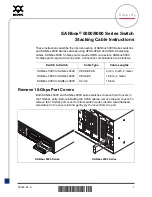
1-1
1
MAC Address Table Management
z
The term switch used throughout this chapter refers to a switching device in a generic sense or the
switching engine of a unified switch in the WX3000 series.
z
The sample output information in this manual was created on the WX3024. The output information
on your device may vary.
z
This chapter describes the management of static, dynamic, and blackhole MAC address entries.
For information about the management of multicast MAC address entries, refer to the part related
to multicast protocol.
Overview
Introduction to MAC Address Table
A switch is mainly used to forward packets at the data link layer, that is, transmit the packets to the
corresponding ports according to the destination MAC address of the packets. To forward packets
quickly, a switch maintains a MAC address table, which is a Layer 2 address table recording the MAC
address-to-forwarding port association. Each entry in a MAC address table contains the following fields:
z
Destination MAC address
z
ID of the VLAN which a port belongs to
z
Forwarding egress port numbers on the local switch
When forwarding a packet, a switch adopts one of the two forwarding methods based on the MAC
address table entries.
z
Unicast forwarding: If the destination MAC address carried in the packet is included in a MAC
address table entry, the device forwards the packet through the forwarding egress port in the entry.
z
Broadcast forwarding: If the destination MAC address carried in the packet is not included in the
MAC address table, the device broadcasts the packet to all ports except the one receiving the
packet.
Introduction to MAC Address Learning
MAC address table entries can be updated and maintained through the following two ways:
z
Manual configuration
z
MAC address learning
Generally, the majority of MAC address entries are created and maintained through MAC address
learning. The following describes the MAC address learning process of the device:
















































